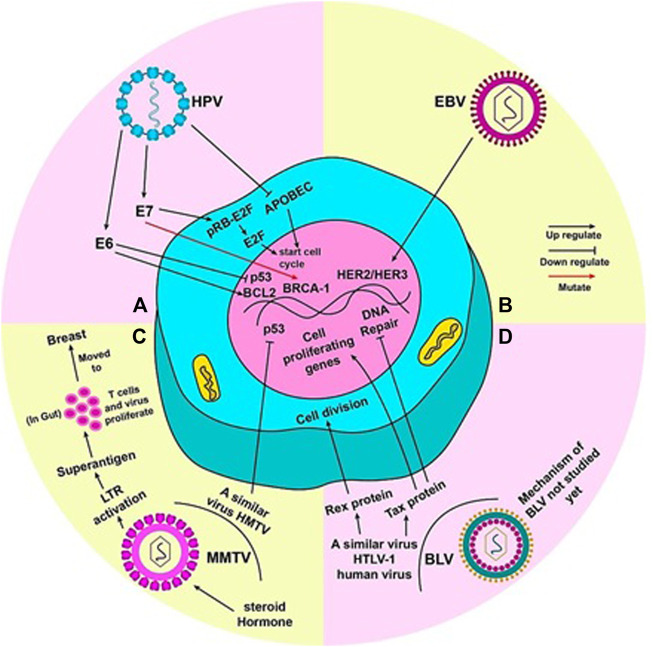FIGURE 2.
Mechanism by which each virus is said to cause breast cancer: (A) When mutated, oncoproteins (E6 and E7) of HPV virus activate pro-tumor genes. E6 activates BCL2 and inhibits p53, thus, promoting cell division. The pRB-E2f complex inhibits cell cycle; E7 detaches E2f from pRB and E2F alone commences the cell cycle. Mutation of BRCA-1 gene by E7 can also lead to tumor development. HPV also inhibits APOBEC (a cell cycle inhibitory molecule) to start cell cycle and cause genome instability. (B) EBV can activate HER2/HER3 gene(s) to render cell towards uncontrolled division. (C) Steroid hormones lead to efficient replication and increased expression of MMTV genome. An LTR in the MMTV genome codes for superantigens which activate T lymphocytes. MMTV replicates rapidly in these T cells in the gut, during which it can be carried to the breast. HMTV, a virus similar to MMTV, can inhibit p53 to induce to cell cycle. (D) The true mechanism by which BLV causes cancer in humans has not been yet studied. However, HTLV-1, a virus similar to BLV present in humans, can lead to uncontrolled cell division by the production of Rex and Tax proteins. Tax protein accentuates this by activating cell proliferating genes and halting DNA repair mechanism of the cell.

